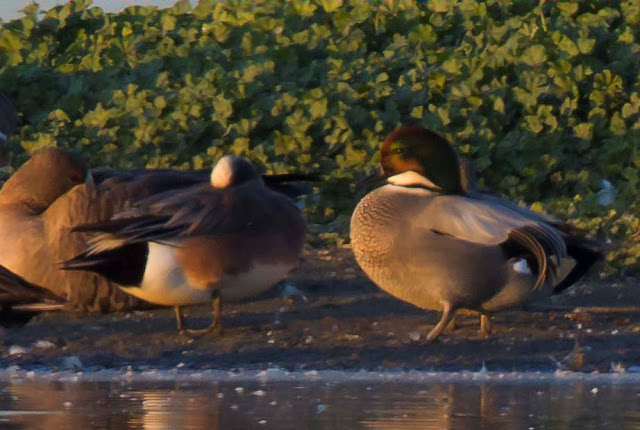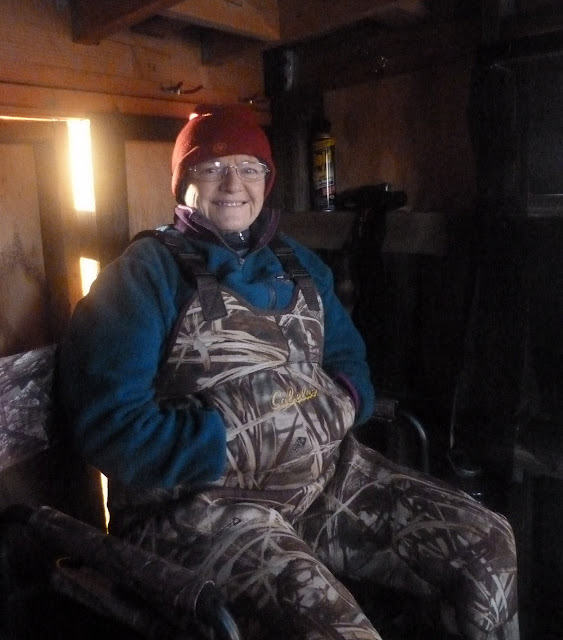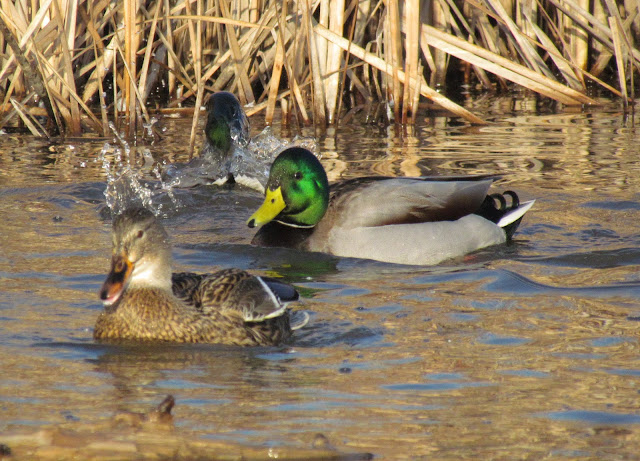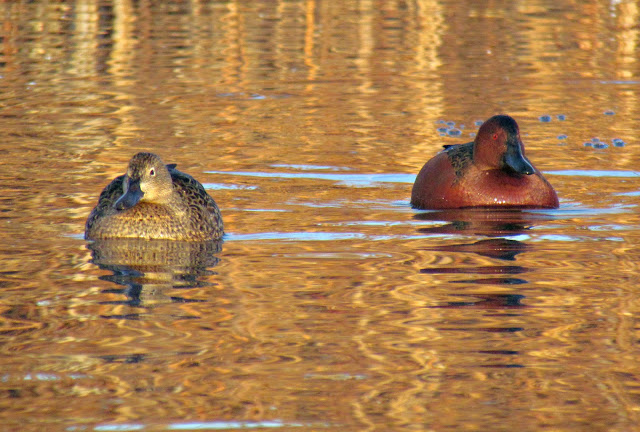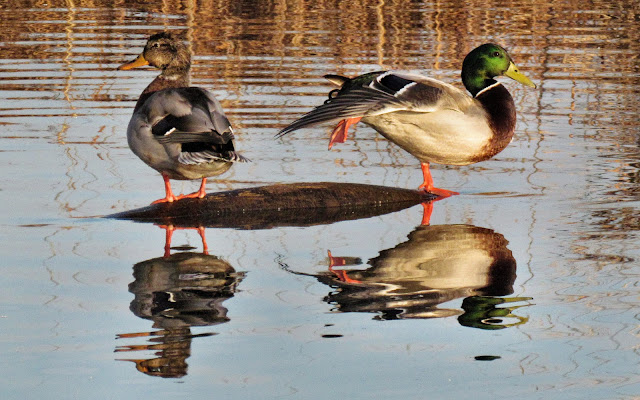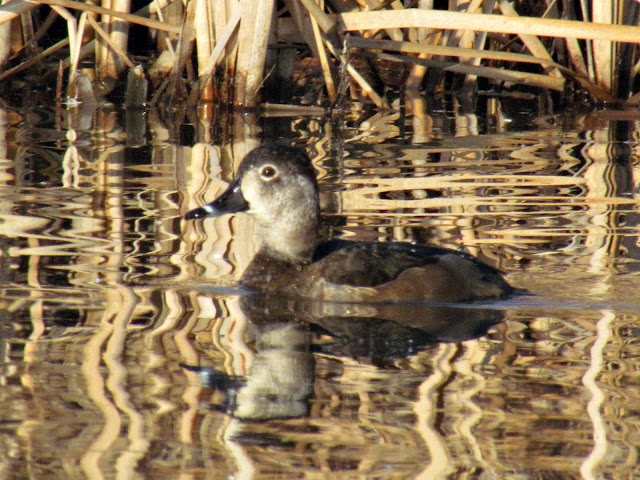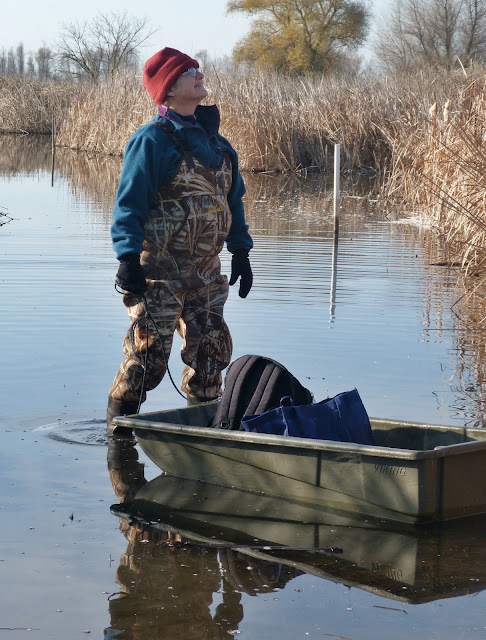I got to join the Peace Vally Christmas Bird Count on this past Tuesday. I had met Pete Sands, the complier, at Colusa NWR while watching the falcated duck. He promised I could do the Peace Valley Christmas Bird Count. Sutter County, on his property in the Sutter Buttes.
I joined the group at 6:00AM for breakfast at the Gridley Grill, then joined Pete and Mary in Mary's car for the count. We birded both inside and outside of the Buttes but kept separate lists so Pete can follow the bird trends in the Buttes. Since there were three of us - often there is just one in a group because this count does not get enough volunteers - we were able to beat the record for the Buttes by two or three birds. Our total was 47 birds in the Buttes. I think we were under 100, a pretty low number for the count circle.
My early Christmas gifts were meeting new friends, getting to spend a glorious day in beautiful scenery and getting three lifers:
rock wren,
oak titmouse, and
Lewis's woodpecker.
We hiked a little over three miles but it felt longer since much of it was up hill - definitely more than half. :) We also birded from our car for another three hours or so.
 |
| Don't you dare come any closer said the burrowing owl just before he flew |
 |
| We hiked very close to this rock formation |
 |
| A closer view of the lichens in the rock formation |
 |
| We met some of Pete's shorthorn cows as we hiked up this trail |
 |
| One of scores of beautiful views. |
 |
| Western scrub jay |
 |
| Pete catching up on the count numbers |
 |
| While Mary and I still struggle up the hill |
 |
| Trees growing in rock |
 |
| Turkey vulture soaking up sun |
 |
| Then flying off |
 |
| Just another view |
|
 |
| Phainopepla - one of several we saw and heard |
|
|
|
 |
| An acorn woodpecker's bank tree |
 |
| Are we done yet? |
It was a day of discovery, laughter and friendship. I think these are the best presents of all.
PS. Pete just sent me the list from his property which he keeps separate from the entire part of his count. We only got a few different birds on the rest, including crows, meadowlarks, tundra swans, sandhill cranes, greater white - fronted geese, and ducks when it was too dark to differentiate them.
The list follows:
DeanPlace-PVCBC, Sutter, US-CA
Dec 20, 2011 8:30 AM - 3:30 PM
Protocol: Traveling
3.0 mile(s)
49 species
California Quail (Callipepla californica) 15
Great Blue Heron (Ardea herodias) 1
Great Egret (Ardea alba) 1
Turkey Vulture (Cathartes aura) 18
Northern Harrier (Circus cyaneus) 1
Sharp-shinned Hawk (Accipiter striatus) 2
Red-shouldered Hawk (Buteo lineatus) 1
Red-tailed Hawk (Buteo jamaicensis) 4
American Kestrel (Falco sparverius) 2
Killdeer (Charadrius vociferus) 2
Great Horned Owl (Bubo virginianus) 1
Burrowing Owl (Athene cunicularia) 1
White-throated Swift (Aeronautes saxatalis) 6
Anna's Hummingbird (Calypte anna) 1
Lewis's Woodpecker (Melanerpes lewis) 1
Acorn Woodpecker (Melanerpes formicivorus) 25
Red-breasted Sapsucker (Sphyrapicus ruber) 1
Nuttall's Woodpecker (Picoides nuttallii) 12
Northern Flicker (Colaptes auratus) 12
Black Phoebe (Sayornis nigricans) 3
Say's Phoebe (Sayornis saya) 5
Loggerhead Shrike (Lanius ludovicianus) 3
Western Scrub-Jay (Aphelocoma californica) 22
Oak Titmouse (Baeolophus inornatus) 20
Bushtit (Psaltriparus minimus) 15
White-breasted Nuthatch (Sitta carolinensis) 14
Rock Wren (Salpinctes obsoletus) 5
Bewick's Wren (Thryomanes bewickii) 2
Ruby-crowned Kinglet (Regulus calendula) 25
Western Bluebird (Sialia mexicana) 36
Mountain Bluebird (Sialia currucoides) 18 Regular winter visitors here
Hermit Thrush (Catharus guttatus) 4
American Robin (Turdus migratorius) 6
Varied Thrush (Ixoreus naevius) 3
Northern Mockingbird (Mimus polyglottos) 8
Phainopepla (Phainopepla nitens) 6 Resident in buttes
Spotted Towhee (Pipilo maculatus) 24
Rufous-crowned Sparrow (Aimophila ruficeps) 5
California Towhee (Melozone crissalis) 14
Lark Sparrow (Chondestes grammacus) 216 Abundant here this year
Savannah Sparrow (Passerculus sandwichensis) 78
Fox Sparrow (Passerella iliaca) 2
White-crowned Sparrow (Zonotrichia leucophrys) 22
Golden-crowned Sparrow (Zonotrichia atricapilla) 212
Dark-eyed Junco (Junco hyemalis) 96
Western Meadowlark (Sturnella neglecta) 32
Brewer's Blackbird (Euphagus cyanocephalus) 355
House Finch (Carpodacus mexicanus) 30
Lesser Goldfinch (Spinus psaltria) 62
Check out these coordinates in Google Earth to see the site of the ranch and the topography.
39.240547,-121.802155

























